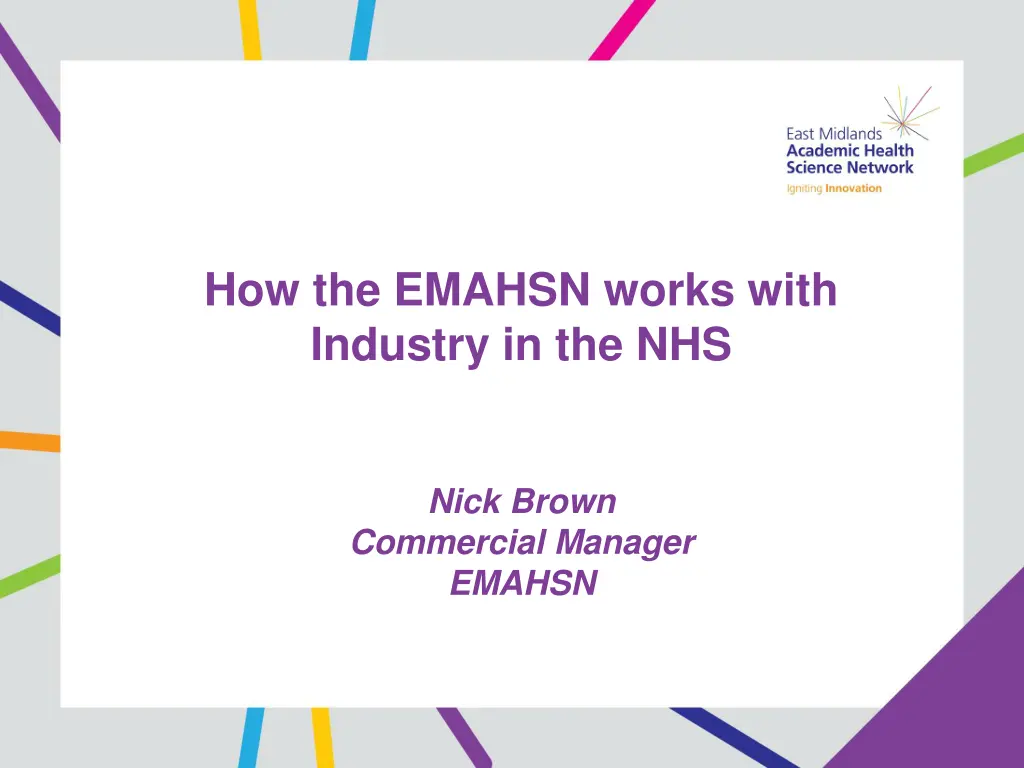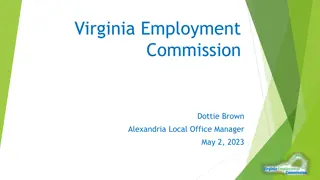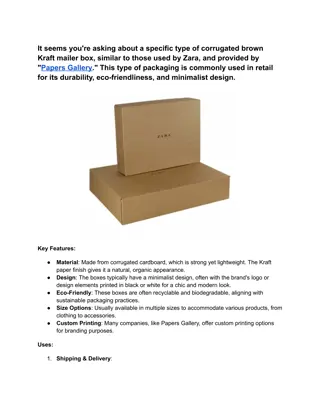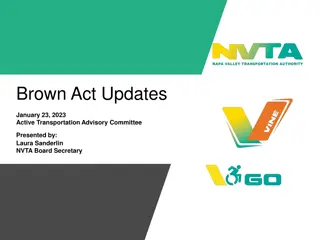
Enhancing Industry Collaborations in NHS for Improved Healthcare Outcomes
Learn how EMAHSN collaborates with industry in NHS to deliver better health outcomes, support local healthcare companies, improve interactions between industry and healthcare organizations, and address challenges in innovation adoption and NHS procurement. Explore insights on developing evidence-based business cases and gaining traction for innovations within the healthcare sector.
Download Presentation

Please find below an Image/Link to download the presentation.
The content on the website is provided AS IS for your information and personal use only. It may not be sold, licensed, or shared on other websites without obtaining consent from the author. If you encounter any issues during the download, it is possible that the publisher has removed the file from their server.
You are allowed to download the files provided on this website for personal or commercial use, subject to the condition that they are used lawfully. All files are the property of their respective owners.
The content on the website is provided AS IS for your information and personal use only. It may not be sold, licensed, or shared on other websites without obtaining consent from the author.
E N D
Presentation Transcript
How the EMAHSN works with Industry in the NHS Nick Brown Commercial Manager EMAHSN
What do we do? Through our industry and enterprise programmes we: Deliver improvements in health outcomes and patient experience, as well as promoting economic growth and wealth creation, through putting proven innovation into practice at pace and scale Support the successful development of East Midlands based healthcare companies, including SMEs Improve the interface between industry and NHS, social care and public health organisations Support and complement the work undertaken by trade organisations, LEPS, research support networks and other organisations within the region
Selling to the NHS Procurement Clinical Business managers Commissioning Group Clinicians Procurement Hospital Trusts GPs Other organisations Health and Wellbeing Boards NICE NHS England Specialist Commissioners NIHR CSUs NHS Supplies .. Patient Social Care Community Care Trusts
The Challenges for Innovations and Industry Regulatory approval The right evidence Preparation of NHS business cases Trial sites/evaluation Funding sources Moving from trials to usage
Developing an evidence based business case To get ideas, innovations or treatments adopted, a business case needs to be developed. Commissioners and providers will both need one. Just because it works and is better for patients doesn t mean that the NHS will buy it. Early in development of any idea, some time should be invested to be clear on what priorities will be addressed, who will the customer be and how will current treatment pathways be affected. These can then be integrated to developing an NHS Business Case. Templates for individual NHS organisations and generic NHS templates can be found online and support in developing them is available from the EMAHSN team.
What do you need to get traction? Relative advantage the degree to which an innovation is perceived as being better than the idea it supersedes. Compatibility the degree to which an innovation is perceived as being consistent with the existing values, past experiences and needs of potential adopters. Trialability the degree to which innovations can be piloted before full adoption. Visibility and observability the ability to see the benefits of an innovation. Timescale this includes the timing of introduction, the time it takes to adopt an innovation and to see the return on investment. Communicability - the process by which participants create and share information with one another to reach a mutual understanding.
Dont forget! Adoption works most effectively through the interaction of three sets of forces that help create the demand: Bottom up pressures patient pressure, professional and managerial enthusiasm. Horizontal pressures peer influence, collaboration, competition and effective marketing from external suppliers. Top down pressures through centrally imposed requirements, regulation and incentives and support, such as NICE guidance and Tariffs. A COMBINATION OF ALL THREE SETS OF FORCES IS MOST SUCCESSFUL!!
CCG/STP Industry Engagement Programme: innovation supported transformation Donna Hadley
Area of Challenge Improve care and reduce costs of care for patients with long-term conditions, specifically diabetes, respiratory, cardiology and falls With the following target impacts/outcomes: To significantly reduce or eliminate unnecessary acute based outpatient appointments for this cohort of patients; To increase efficiency of care for these LTCs in primary care; To reduce instances of escalation and emergency admissions.
Progress to Date Over 250 delegates attended an Innovation Exchange event on 24th January 2017, with a good balance of representation from commercial companies, third-sector organisations, commissioners, public health, health & social care providers and patient groups. The East Midlands Local Digital Roadmap (LDR) groups were also represented. Over 100 solution proposal ideas were generated during the day which were subsequently grouped into 12 Solution Areas . During Feb-April 2017 Solution Proposals were co-produced by the groups including representatives from companies supplying relevant innovative products and services, clinicians, NHS/Social Care service providers, commissioners and academics. The Solution Proposals groups submitted their proposals to a CCG/STP Selection Panel on 18th April 2017.
Selection Panel Outcomes A CCG/STP Selection Panel made up of senior representatives from all five STP areas met on the 10th May to review and select those solution proposals to be taken forward to the demonstrator stage. The panel reviewed each proposal taking into account the current STP priorities and assessed the proposals based on their viability, their alignment to STP transformation priorities and plans; and the potential magnitude and impact in terms of their predicted outcomes. The panel was unanimous in its decision to take forward three Solution Proposals: 1. Improved systems, support and Education for GPs 2. Outpatient Appointment Scheduling 3. Falls Prevention and Monitoring
Progress to Date/Next Steps Three demonstrator sites have been confirmed for the three solution proposals: 1. Improved systems, support and Education for GPs - Lincolnshire 2. Outpatient Appointment Scheduling - Derbyshire 3. Falls Prevention and Monitoring Leicester, Leicestershire & Rutland Specifications for the innovative products and services required to support deployment of the demonstrator sites are in development. EMAHSN is reviewing the availability of required products and services via existing frameworks and will issue tenders including request for confirmation of risk share supply.
EMAHSN: Transforming the health of 4.5m East Midlands residents and stimulating wealth creation Name: Nick Brown Email: nicholas.brown@nottingham.ac.uk Name: Donna Hadley Email: donna.hadley@nottingham.ac.uk www.emahsn.org.uk





















